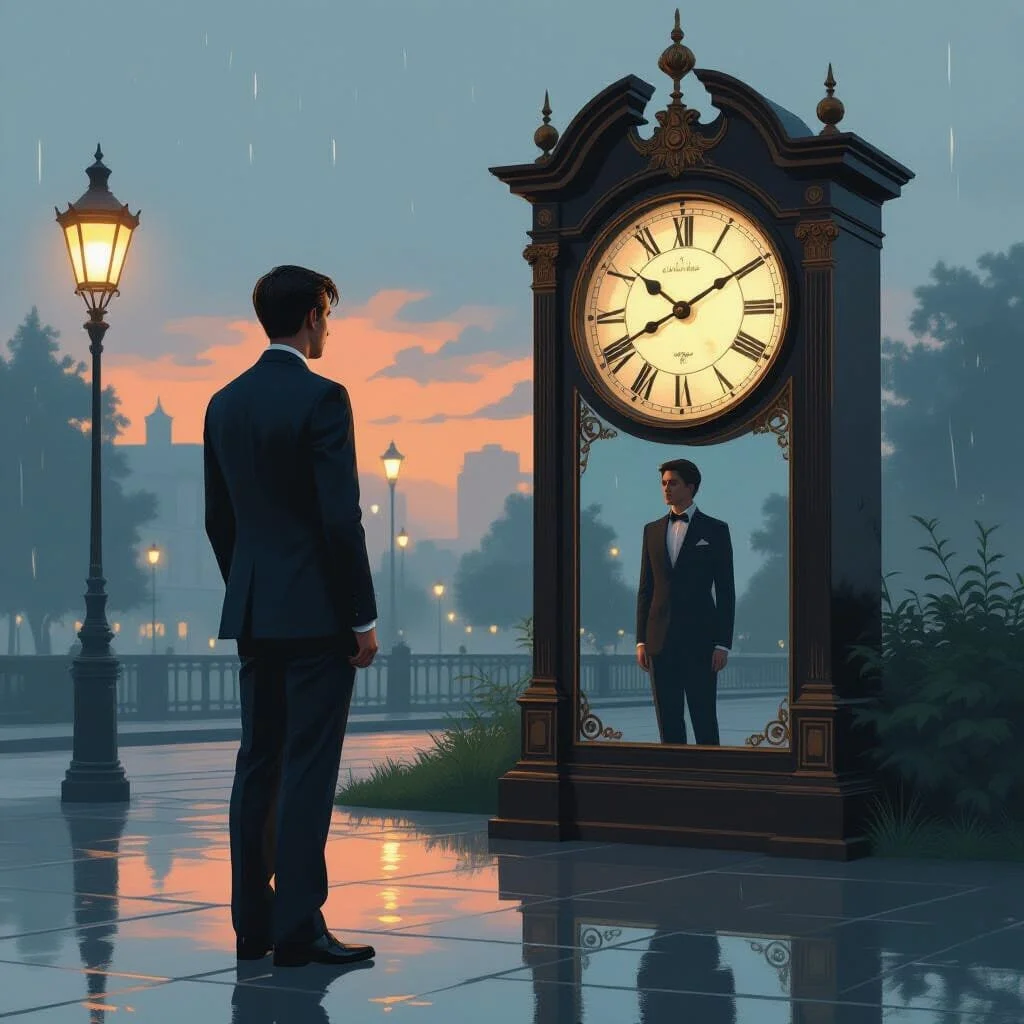Ghosts and Time Reflection: Are Spirits Echoes of the Past?
For centuries, humans have wondered what ghosts really are. Are they the spirits of the dead, lingering in places they once knew? Are they simply tricks of the mind, born of fear, stress, or suggestion? Or—perhaps more intriguingly—are ghosts a reflection of time itself, bleeding moments from the past into the present?
The idea of time reflection offers a fascinating angle on the paranormal. Rather than viewing ghosts strictly as souls of the departed, some theories suggest they might be echoes, recordings, or refractions of time—manifestations of past events replaying themselves in front of us.
Are ghosts just reflections of time?
Let’s explore how this concept has emerged in folklore, science, and paranormal study.
Ghosts as Time Echoes
One of the oldest theories in parapsychology is the stone tape theory. Popularized in the 1970s, it suggests that the environment—stone walls, wooden beams, even soil—can record highly emotional events. Under the right conditions, these moments can “replay,” much like pressing play on a videotape. Witnesses don’t interact with the ghost; instead, they see a moment from history reflected into their own time.
This would explain why some hauntings are residual. A figure walks down the same hallway over and over, never acknowledging the living. These aren’t conscious spirits, but rather recordings of time itself.
Time Reflection in Physics
Though mainstream physics doesn’t fully support ghostly apparitions, there are intriguing parallels.
Einstein’s theory of relativity suggests that past, present, and future exist simultaneously in a four-dimensional “block universe.” If time is a landscape rather than a river, could ghosts be glimpses across its folds?
Quantum mechanics entertains ideas of retrocausality—where effects can influence causes, and information can flow backward in time. Some paranormal researchers wonder if ghost sightings are brief leaks in this temporal fabric.
Light and sound reflections offer a natural analogy. Just as an echo can bounce back seconds later, could extreme conditions allow an emotional event to “bounce back” years or centuries later?
While speculative, these concepts keep the discussion of ghosts firmly linked to how we perceive and understand time.
Folklore and the Time Connection
Across cultures, ghost stories often link the spirit world with disrupted timelines.
In Japanese folklore, spirits called yūrei are bound to the world until their unfinished business is resolved, effectively “stuck in time.”
In Celtic traditions, thin places—spots where the veil between worlds is thinner—are said to allow past and present to overlap.
Even modern ghost hunters frequently describe certain haunted locations as if time “stands still,” with sounds, smells, or apparitions from centuries earlier still hanging in the air.
The persistence of these themes suggests humanity instinctively associates the supernatural with time’s mysteries.
Personal Accounts of Time Reflection
Paranormal investigators often note that some encounters feel less like conversations with spirits and more like stepping into another era. For example:
Apparitional reenactments: People see soldiers marching on a battlefield, then vanish mid-stride.
Time slips: Individuals report suddenly finding themselves in a past setting, interacting briefly before “snapping back” to the present.
Environmental triggers: Old buildings with stone foundations, castles, and lighthouses—structures layered with history—are particularly prone to these phenomena.
These stories blur the line between ghost sightings and accidental glimpses across time.
Are Ghosts Spirits, Reflections, or Both?
The question remains: are ghosts conscious entities, or are they snapshots of history replaying in our world? Perhaps the answer is both. Some hauntings appear interactive—spirits responding, communicating, and showing awareness. Others behave like recordings on a loop, entirely disconnected from the observer.
Time reflection theory suggests that not all ghosts are the same. Some may indeed be the souls of the departed, while others are the echoes of history itself, bouncing back at us like a reflection in a mirror.
Closing Thoughts
The link between ghosts and time reflection invites us to expand our perspective. Whether through folklore, paranormal research, or theoretical physics, one truth remains: the boundaries of time are far less rigid than we imagine. Ghosts may not just be spirits wandering in search of peace—they may be proof that time itself can ripple, replay, and reflect.
When we see a ghost, we may not just be looking at the dead. We might be looking at time itself—remembering.
